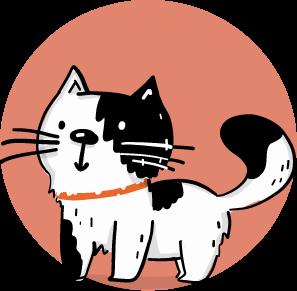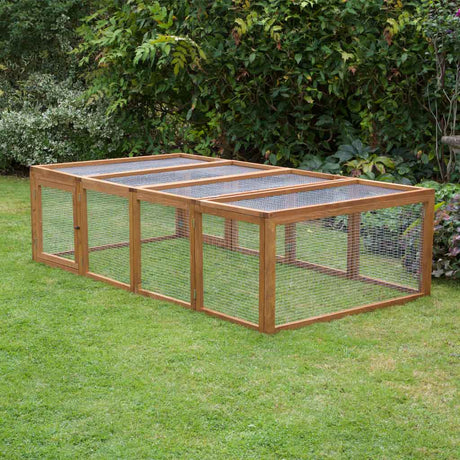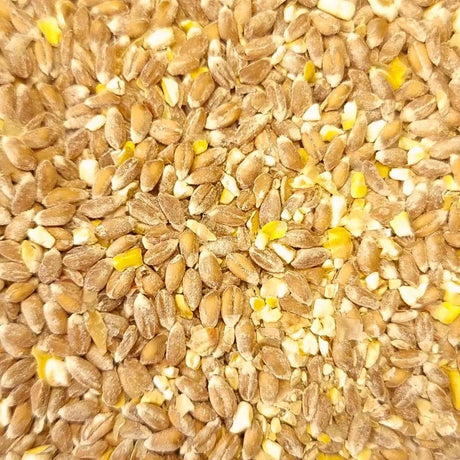Should you build your own hutch from rabbit hutch plans? Or should you go pre-built? It’s easiest, of course, to buy a pre-made rabbit hutch. Home and Roost makes some of the highest quality hutches on the market today. But if you want to build your own rabbit hutch, we want to support you in that, too.
Why You May Want to Build Your Own Rabbit Hutch
There are a lot of reasons you might want to build your own custom rabbit palace.
The best reason, of course, is to build your bunnies the rabbit mansion of your dreams. You might also want more space for your buns than a traditional hutch can provide. Or maybe you need an enclosure that fits into an oddly-shaped part of your garden.
Or perhaps you have a vision for the most fabulous and unique rabbit mansion ever, and you want to flex your creative muscles.

If you’re thinking that building your own hutch is cheaper or easier, however, you’ll probably be disappointed.
If the job is worth doing, it’s worth doing right. And that means no cutting corners.
So, what do you need for your DIY rabbit setup?
The Specs
First things first. You’ll need to know how much space you want to provide, inside and out. Also, you’ll need to decide on a design. And then it will be time to think about extras.
Size Does Matter
The great thing about building your own rabbit hutch is that you can make it as large as you like. And you do want to give your bunnies plenty of space, right?
So, how much space should you build in?

Here are some guidelines. Please note that these are minimums.
The Rabbit Welfare Association and Fund (RWAF) hutch recommendation is an enclosure at least six feet by two feet (1.8 metres by 0.6 meters) per rabbit.
The RSPCA rabbit hutch size recommendation is even larger: at least ten feet (three metres)
long by 3.3 feet (one metre) wide by 3.3 feet (one metre) high. And if you have more than one bun, multiply that by the number of rabbits.
These dimensions should allow your rabbit to stand up on hind legs without its ears brushing the ceiling, to stretch out on the floor, and to hop from one end of the hutch to the other three times.
At minimum.
A Hutch is Not Enough
It’s really not. A hutch is like a teenager’s bedroom. You want them to have all of the necessary things, but they shouldn’t be spending all their time in there.
In addition to a secure, comfortable, weatherproof living space, your rabbits also need to be able to engage in natural behaviours such as running, jumping, and digging.
Ideally, your hutch, whether pre-built or DIY, will provide your rabbit with all-day access to a run or other safe exercise space.
Different Types of DIY Hutches
You can build a rabbit hutch from a surprising number of different materials. Although you can design and build the entire hutch from scratch, you don’t have to. You can buy some parts pre-made and add to them. Or you can do an entire build by following a tried and tested plan.
However, no matter which design you choose, the finished product should be:
- Sturdy
- Spacious
- Weatherproof
- Predator-proof
- Well-ventilated
- Built from pet-safe materials

Shed-Type Hutch
Next to a pre-made hutch, a shed-type hutch is probably the easiest DIY design there is. It’s also one of the safest and sturdiest.
A pre-built wooden shed (or a shed kit) can provide a secure, roomy home for your rabbits, which will stand up to both weather and predators.
You can kit your shed out inside with ramps, shelves, toys, and private areas for your bunnies. You can also add insulation or other weather accommodations. Best of all, if you use a pre-built shed, or build a shed from a kit, you can be reasonably certain that it will be sturdy.
Please note: although it’s possible to use a metal shed as the basis for your rabbit palace, we don’t recommend doing so. A metal shed can overheat in the summer, and is poorly insulated against the cold. Also, cheaper models may not be weatherproof.
If you do decide to use a shed for your rabbit palace, be certain that it has adequate ventilation, and that any wood is treated with pet-safe treatments.
Storage Grid Cube Hutch
You might have come across storage grid cube hutches.
Storage grids are wire panels that are generally twelve inches by twelve inches (30 centimeters by 30 centimeters). You put them together with plastic clips. And, if you do it right, you can build a quick, inexpensive, and completely customizable rabbit hutch.
This type of hutch has several advantages:
- The materials are rabbit-proof
- They’re also easy to clean
- You can make a lot of different configurations
- It’s relatively inexpensive
- The setup is fast and easy
A storage grid cube hutch can be a great choice for an indoor rabbit hutch, or as part of an outdoor enclosure in temperate climates.
But this is not a suitable design for an outdoor hutch in areas that get rain, snow, or strong wind. It’s not weatherproof, and it’s not predator-proof, either.
If you do use storage grids to construct your hutch, make sure to use solid materials for the flooring. Wire flooring can and will harm your bunnies’ sensitive feet. Good choices for covering wire floors include cardboard, plywood, and pet-safe linoleum.
Here’s how to make a storage grid hutch for your bunnies.
Wood and Wire Rabbit Hutch
If you have some carpentry experience, you can build a hutch from wood and wire. If your experience is limited, you might want to buy a plan. However, if you’re confident in your skills, a design like this one could make a fun family project.
In addition to wood that’s been treated with a pet-safe treatment, some other supplies you might need include:
- Chicken wire or small-gauge wire mesh (also good for rodent-proofing your hutch)
- Plywood or linoleum panels for the floor
- Roofing materials
- A carpentry stapler and staples
You should also consider:
- Building in a “hide” box where bunnies can go to “get away from it all”
- Weatherproofing
- Removable wire dividers to separate rabbits if necessary
- A place to attach a run
The Rabbit Welfare Association and Fund has some suggestions for easy wood and wire structures, including a hutch-and-run combination.
Rabbit Hutch Plans
It’s not cheating to use someone else’s rabbit hutch plans. In fact, purchasing a plan can help you to build a safe and sturdy hutch.
Here are some of our favourites.
Design Considerations
Whatever your hutch design, there are a few considerations to keep in mind.
Flooring
Flooring is one of the most important parts of the hutch. It needs to be easy to clean, especially if your bunny isn’t litter trained. It should also be solid, to protect your rabbits’ delicate feet. Finally, flooring material shouldn’t harm your rabbits if they chew it.
Some popular flooring material for rabbit enclosures include:
- Wood
- Linoleum
- Plastic
- Wire mesh
- Ceramic tile
Some people like to use wire mesh, especially if their bunnies aren’t litter-trained, because waste falls through the mesh. If you do use mesh for flooring, make certain to cover most of the floor with solid, rabbit-safe materials such as cardboard, plywood, or linoleum.
Weatherproofing
It’s important to keep your rabbits safe from the weather. Rain, snow, wind, and temperature extremes are not just uncomfortable. They can also be dangerous. Here are a few weatherproofing measures you can take.
Precipitation
Hutch covers and run covers can help to protect your rabbits and their enclosure from rain and snow. Always measure carefully and buy the correct size for your hutch.
Alternately, you could fashion your own cover from a waterproof tarp.

Sun and Heat
Rabbits are much better equipped to deal with cool weather than hot weather. In fact, temperatures over 80 degrees Fahrenheit (26 degrees Celsius) can be dangerous for rabbits.
There are several ways to keep your rabbits cool in warm weather.
First, figure out which part of your garden gets the most direct sunlight. Do not place your hutch there.
Next, make sure to provide adequate shade. Hang a shade cloth above the hutch and run to reduce sunlight.
A rabbit-safe ice pod or soda bottle with ice inside can give your bunnies something cool to snuggle up to.
Also, a large ceramic tile, whether chilled or as is, can help to keep your rabbit cool.
Always make sure your bunny has plenty of fresh water. And if the hot weather continues, it’s fine to bring outdoor rabbits to a rabbit-proofed space indoors.
Cold
Cold is less of a worry for rabbits than heat. But if your area sees extreme cold, then you will need to take precautions.
First, make sure that your hutch has a sheltered space, which is enclosed on five of six sides. This can act as a burrow and protect from cold, wind, and precipitation.
Also, a hutch cover can keep the wind out and reduce chill.
Provide plenty of hay and bedding. Your rabbits will use this to make a warm, toasty nest.
Your rabbits will also appreciate a blanket or snuggly bed. A pet-safe heating pad will also help.
Most importantly, though, if you think it’s too cold for your bunnies, it’s fine to bring them inside until the extreme cold abates.
Wind
Wind can make a cold day colder, but it can also be frightening. So protect your bunnies.
Start by placing your hutch in a sheltered part of your garden, for example in a corner between two solid walls.
If your hutch itself has solid walls, like a shed-style hutch, your work is already done. But if your hutch has open walls, use a hutch cover or tarpaulin to cover open areas in order to protect your bunnies from the wind.
Special Features
This is your chance to make your rabbit palace a place like no other. Here are a few structural extras to consider.
Levels
Adding levels to your rabbit hutch gives your bunnies more living space. It also makes their home a bit more interesting for them. You can add levels by building in additional floors, shelves, platforms, and tables. Here’s how one bunny owner did it.
Ramps
You can easily build a ramp, or even a system of ramps, to allow your rabbits to access different levels in their hutch.
Bunny Box
Every rabbit needs a “hide.” This is a place in the hutch that’s enclosed on all sides but one. It can keep your rabbit safe from weather, and help them to chill out when they’ve had enough human company.
Artificial Burrow
In the wild, rabbits live in cozy burrows. If part of your hutch or run sits on the ground, you can easily make a DIY burrow from a plastic tub, a large bucket, PVC tubing, or a combination of these. Here’s one person’s DIY burrow.
Dig Box or Platform
Digging is a natural bunny behaviour. In the wild, bunnies dig themselves burrows to keep safe and warm. When pet rabbits dig, it helps them to keep their nails ground down, gives them mental stimulation, and helps them to get some exercise, too.
Of course you don’t want your bunny to dig out of its enclosure. In addition to dig-proofing your hutch and run, you can give your bunny a way to dig safely, either with a dig box or, as the rabbit owner below has done, by making a digging platform.
A dig box can be as simple as a cardboard box filled with dirt. You can make it even more fun by burying food treats and chew toys in the dirt.
Hay Rack
A hay rack makes it easy and fun for your rabbit to get their daily dose of hay. And they’re not difficult to build, either. In fact, if you wanted to make a hay feeder that doubles as a chew toy, you could make it out of a cardboard box.
Here are a few ideas for DIY hay feeders.
Kit Out Your Hutch
Once your hutch is built, it’s time to go shopping! Here are a few rabbit hutch essentials that nobunny should be without.
Don’t Forget a Run
As we’re fond of saying, A Hutch is Not Enough. A run gives your rabbits a safe place to exercise and play.
Are You Ready to Start Building?
Building your own rabbit hutch might sound daunting, but it doesn’t have to be. You don’t have to do it all yourself. Consider purchasing expert-made plans. Or assemble your rabbit mansion from a collection of sturdy, pet-safe, pre-made components. The only limit is your imagination.
Have you built your own rabbit hutch? Show us your designs!









1 comment
Hi do you build custom shed/hutches?